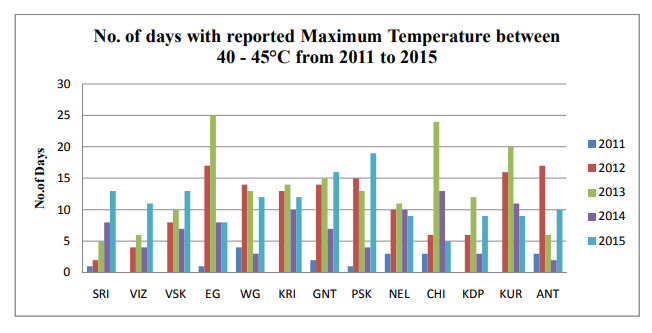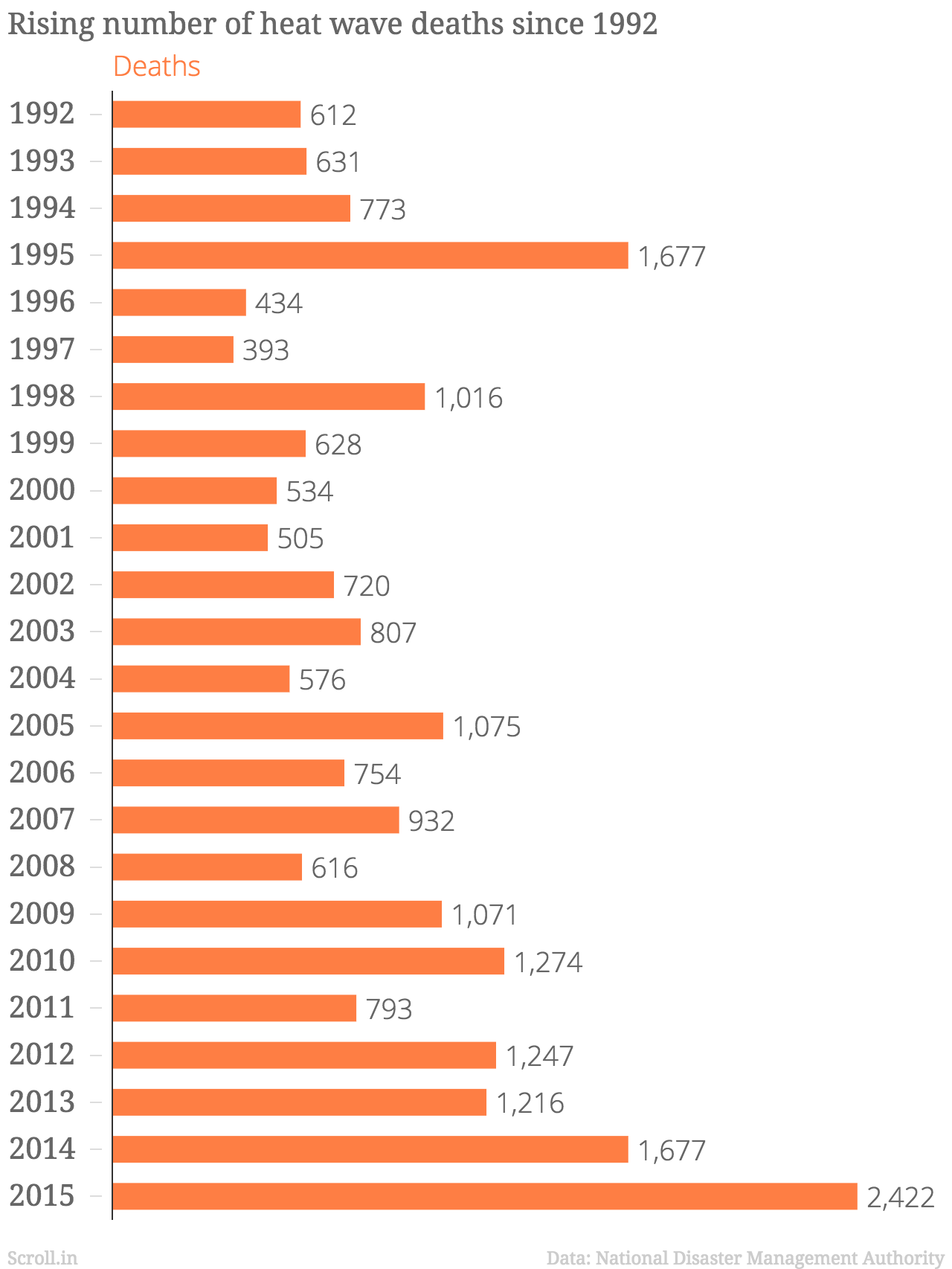Heat wave slaps the common man
Is climate change fuelling heat wave in India?
By- INN/New Delhi, @infodeaofficial
There is a strong and global scientific consensus that the climate is changing and this change will cause an increase in average global temperatures, as well as the number and intensity of heat-waves. Heat-waves are one of the significant causes of death and morbidity across the world, and the impact of heat events are likely to increase due to changing frequency, severity, and intensity of heat-waves caused by climate change.
This time, India is feeling the impact of climate change in terms of increased instances of heat waves which are more intense in nature with each passing year, and have a devastating impact on human health, thereby increasing the number of heat wave casualties. Heat waves have contributed to more deaths than any other natural disaster in Andhra Pradesh and many other parts of India which represent a significant risk to public health.
Generally, a heat wave is a prolonged period of excessively hot weather which may be accompanied by high humidity, especially in oceanic climate countries. The extreme temperatures and resultant atmospheric conditions adversely affect people living in these regions as they cause physiological stress, sometimes resulting in death. In India, Heat Waves typically occur between March and June, and in some rare cases even extend till July.
India Meteorological Department (IMD) criteria for Heat Wave and Severe Heat Wave- Heatwave is considered only after maximum temperate of a station reaches at least 40° C for plains and at least 30° C for hilly regions. When the actual maximum temperature is 45° C or more, irrespective of normal maximum temperature, heat wave should be declared. In the AP context, a heat wave would mean a departure from normal temperature by 4 – 5°C, while a severe heat wave is caused by temperature excess of 6 ° C or more from normal.

Speaking to Infodea Andhra Pradesh metrological Centre Director Y.K. Reddy said in last five years, Andhra Pradesh almost every year heat waves have endured and the duration of heat period is increasing. In the current scenario, heat waves are being managed at an operational level but the need of the hour is it to be managed at a strategic level. In the management of heat waves, it is imperative to decide roles and responsibilities of government and private authorities.
He says just the climate change is not only a reason for the heat wave. There are many other factors like increase in temperature which leads to a heat wave. Sufficient strategic monitoring and clarity around triggers for activation, Mechanism to map or analysis the extreme heat impacts and sharing the information with the available system is extremely important.
Now a days, it’s very easy to make people aware of these circumstances through social media. Even telecom companies can help to send alerts across the community. State Government has constituted a Committee to work on this. The Committee, after deliberations on studying the Heat wave Action Plans of other states and best practices worldwide, have prepared a Comprehensive ‘The Andhra Pradesh State Heat wave Action Plan’ .

Key Components of the Plan
- To monitor climate conditions and Initiating an Early Warning System and Inter-Agency Coordination to alert stakeholders of predicted high and extreme temperatures.
- Building Public Awareness and increasing Community Outreach to communicate the risks of heat waves and implement practices to prevent heat-related deaths and illnesses. Special efforts will be made to reach vulnerable populations through inter-personal communication as well as other outreach methods which include posters, brochures and information sheets etc.
iii. Identifying vulnerable populations and the health risks specific to each group.
- Developing effective strategies, agency coordination and response planning that addresses heat-health risks.
- Heat Health Information Surveillance System—to monitor and assess the impact of heat waves on human health.
- Capacity Building among Health Care Professionals to recognize and respond to heatrelated illnesses, particularly during extreme heat events.
Reddy says in each district collector is in charge to make people aware about certain weather condition. At times when there is any forecast for such thing Metrological department informs government’s concern authority. To make people aware about heat wave AP government conducts awareness camp, audio and video commercials.

Speaking with Infodea very popular social media celebrity Tamil Nadu’s weatherman Mr. Pradeep John, said that whenever the temperature crosses above 45` C. it creates the heat wave. In Tamil Nadu it has less impact of heat wave comparing to Andhra Pradesh, Telangana and northern state.
He added that Trichy, Madurai, Karur, Perambalur, Thiruvannamalai, Velore and Villupuram are the areas where the heat wave affects more. Of which Velore district in Tamil Nadu has seen maximum number of heat waves.
Heat wave is not count under the natural disaster there are many reasons for it. A person is affected with heat wave he or she has already been suffering with some health problems.
When a person is affected with heat wave doctor examines him or her they don’t any sign of heat for death, it’s always some health issue which causes death.
It doesn’t happen once, the death occurs in various parts and not at one time. Which is also one of the reason death caused by heat wave doesn’t fall under natural calamity death. Less awareness among the people regarding this is also one of the causes of death. Government issues alert though it’s channel to make people aware of these natural calamity.

EMERGENCY TREATMENT
- If possible move the affected person to somewhere cooler / shaded area
- Give a cool shower by sprinkling with water or Wrapping in a damp sheet and using a
- fan to create an air circulation Encourage to drink fluids, if they are conscious
- Do not give aspirin or paracetamol
The impact of heat waves all across the country is something that cannot be left unattended under any circumstances. It is important to follow all the guidelines mentioned above and reach out to people so that awareness can be spread about the same as it is rightly said: “Prevention is better than cure”.




